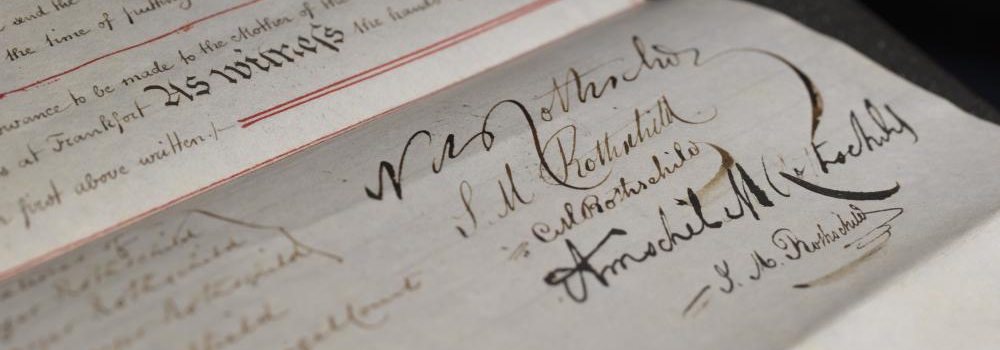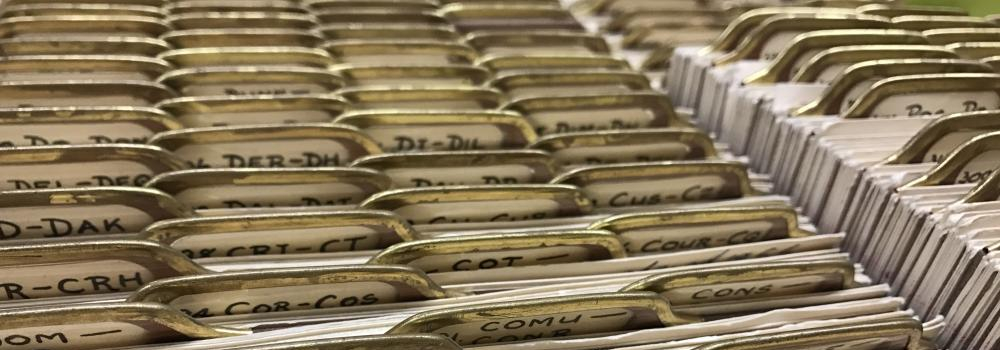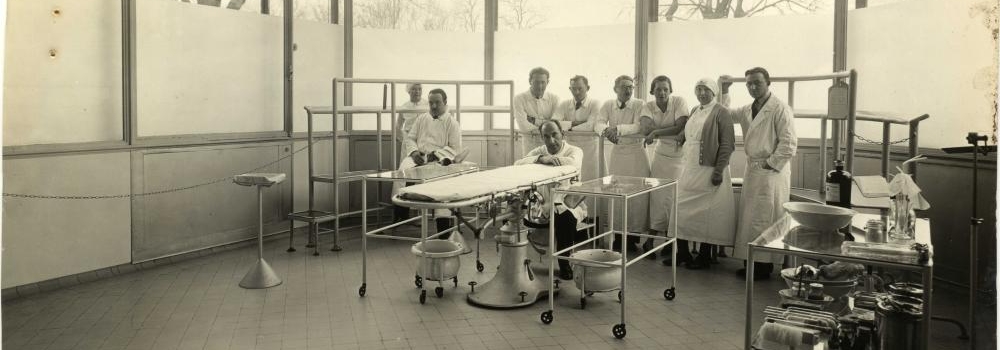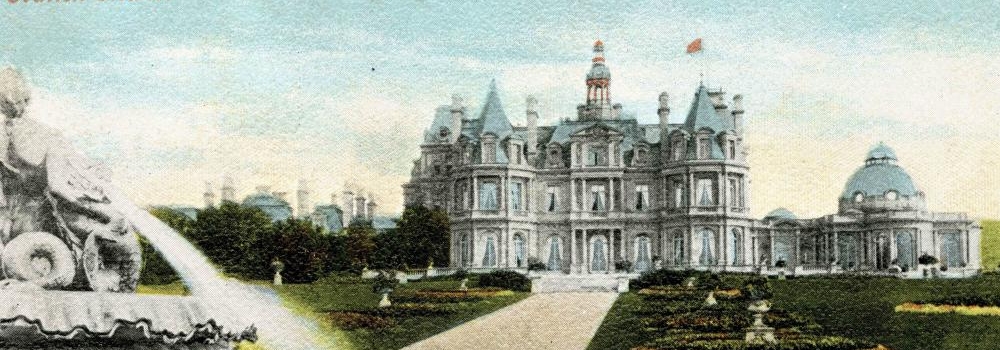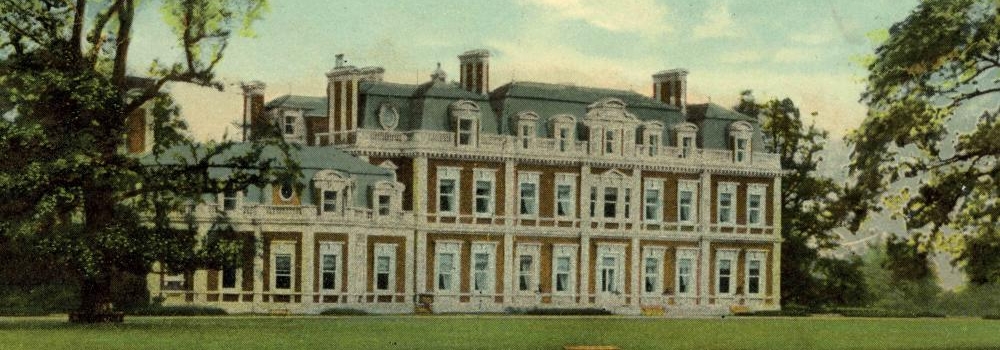In this Choice we reflect on the fortunes of the Rothschilds in what is today the nation of Italy. From his base in Naples, Carl Mayer von Rothschild was to head a strategically important branch of the family business. Two hundred and two years ago this month, on 16 September 1818, Carl married Adelheid Herz in Frankfurt.
The Rothschild business in Naples
The fourth of the ’five brothers’, Carl was born in Frankfurt on 24 April 1788. While often in the shadow of his older brothers, he was nevertheless totally absorbed by the family business. He travelled extensively during the Napoleonic wars, acting as courier for the transfer of funds. In 1821, he was dispatched to Naples to negotiate a loan to the Government of Ferdinand II. Once settled, Carl came into his own, although he continued to visit Frankfurt for long periods. In Frankfurt he resided in a house at 31-33, Neue Mainzerstrasse, and in Naples he occupied the Villa Chiaia. from where he established the fifth Rothschild house under the name C M von Rothschild & figli.
The business of the Naples house followed the pattern of the other firms, in the field of acceptance and exchange, complemented by successful trade in commodities. The Rothschilds' successful management of Neapolitan securities caused other Italian states to seek their services in raising credit, notably the Papal administration in Rome, on whose behalf five loans were issued between 1831 and 1850. Further loans were issued to Tuscany and to Piedmont, of which the fourth in 1859 financed Cavour's victorious Austrian campaign, heralding the formation of a united Italy. The business was also involved in railways in Sicily. Together with his brothers, Carl was granted a barony by Austria in 1822, and was also Royal Prussian Privy Councillor, Privy Councillor to the Electorate of Hesse, General Consul of Sicily and of the Duchy of Parma.
However, the last Rothschild House established in Europe was the first one to close. Carl died in 1855, leaving the business in the hands of his son Adolphe (1823-1900), whose two surviving brothers assumed responsibility of the Frankfurt office on the death of their childless uncle in the same year. The unification of the kingdoms of Italy in 1860 saw the diminution of influence of Naples, and the maintenance of a Rothschild House in the city was no longer viable. Adolphe, rather than entering into business with the new regime, chose to leave Naples and opted to end his involvement in the Rothschild banking partnership. He was bought out of the partnership by his cousins, and the Naples business terminated. C M de Rothschild & figli ceased to trade in 1863.
Marriage and family
Carl married Adelheid Herz (1800-1853) in Frankfurt in 1818; he was 30 and his new bride just 18. At the decree of his mother Gutle, the Rothschild family matriarch, all important family events had to be held in Frankfurt, as she rarely, if at all travelled beyond the confines of that city, even when her children and grandchildren had acquired palatial residences in London, Paris and Vienna. In Naples, the couple courted important political and society figures, and Adelheid became an accomplished hostess.
Carl divided his time between his native Frankfurt and Naples, and the couple had five children. Their first daughter, Charlotte (1819-1884), was to marry her English cousin Lionel Nathan (1808-1879), and from 1836, spent much of her life in England, supporting her husband who succeeded his father Nathan (1777-1836) as head of the London bank. It was Baron Lionel who was elected to serve as MP for the City of London in 1847, but did not take his seat for another eleven years until the discriminatory legislation against Jews was removed, after a lengthy campaign co-ordinated by Lionel and Charlotte from their London town house at 148 Piccadilly. Mayer Carl (1820-1866) was born next, and he eventually took a controlling role in the management of the Frankfurt House after the death of his uncle Amschel Mayer (1773-1855). Carl and Adelheid’s second son, Adolphe Carl (1823-1900) was to take over the Naples business when his father died. Their third son, Wilhelm Carl was to take over the management of the Frankfurt House in 1886; the Frankfurt house was dissolved upon his death in 1901. Their last child, Anselm Alexander Carl (1835-1854) died tragically young, aged just 19.
The two exquisitely carved circular marble portrait plaques in heavy gold frames, today in the collection of the Archive, show Carl and Adelheid in profile relief. The artist is unknown and the pieces are undated, but from the appearance of the sitters they are believed to date from c.1840. Displayed at old New Court for many years, they appear in an inventory in the Archive of collections at Gunnersbury Park in 1917, and it is likely that these pieces were in the collections of Charlotte, Baroness Lionel de Rothschild, either in her London town house, or Gunnersbury (from 1850 when Lionel inherited the Gunnersbury estate). They would have been a comforting reminder of her parents living across The Channel.
RAL 000/2215

